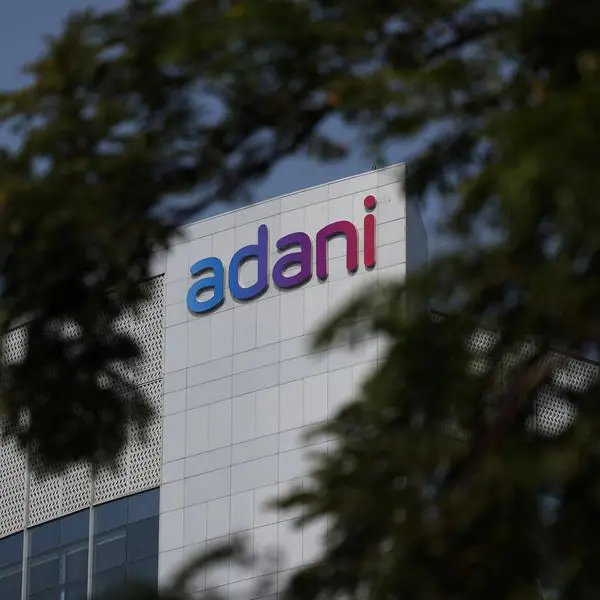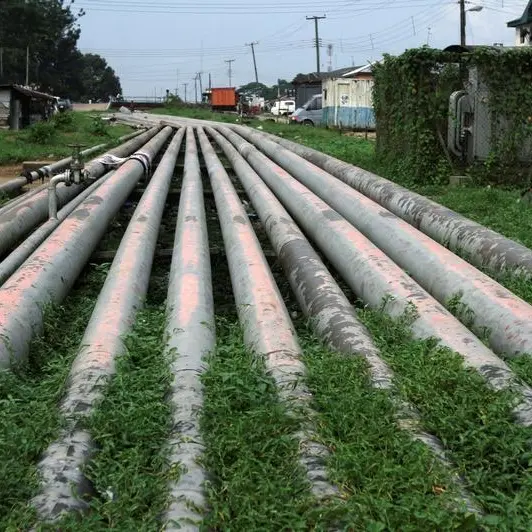PHOTO
Nigeria’s Electricity Supply Industry (NESI) is faced with several challenges, one of which are the incidents of grid instability, a menace that industry stakeholders have proffered lasting solutions to. ADETOLA BADEMOSI, in this piece, examines how Nigeria could address this with an efficient digital system.
By December 11, 2023, the number of Nigeria’s grid collapse incidents from 2016 had amounted to 92 according to industry data.
Nigeria’s power sector has for several years suffered grid collapses which amount to loss of power supply across the environments and customers that it supplies.
Related PostsKogi Guber Election : ADC collapses structure for DinoZaria mosque collapse: Death toll rises to 10UPDATE: 8 dead, 7 injured in Zaria central mosque collapse
Sometimes, the country experiences partial or total collapses. As a result of the grid instability, “big” customers would usually jettison grid supply for other expensive but reliable sources of power like the petrol- or diesel-powered generating sets.
Now, the cost of running businesses with diesel powered generators has become unbearably high and, as a result, businesses are either shutting down or constrained to pass the accrued cost to customers.
“Before COVID-19, I ran a cold room business where I sold iced-blocks to people who sell pure water and drinks like those that sell by the road or hawk. I also sell already blocked drinks like soft drinks, table water and pure water,” said Ms Jennifer Okpara, a cold room operator-turned teacher.
“But towards the end of last year, we moved from our initial location for some reasons, so the place I moved to, the power supply was nothing to write home about. And I use a big generator, so I was using generator to augment.
“Sometimes, people will come but won’t get ice-block and when available they tell you the price is too high.
“Around May, June this year, we had to suspend the business because I couldn’t cope anymore,” she said.
The World Bank puts the economic losses from unreliable electricity supply in Nigeria at an estimated N7 trillion to N10 trillion per year, which is about five to seven percent of the country’s GDP annually.
“This trend must be reversed to ensure better economic outcomes for businesses and citizens,” said Shubham Chaudhuri, World Bank Country Director for Nigeria.
Apart from the huge effect epileptic power supply has on electricity dependent businesses in the country, critical generating machines of the generation companies are also affected.
According to the country’s electricity generation companies (GenCos), grid instability triples the cost of maintaining generating sets.
“Frequency deviations out of tolerable zones are not only damaging the units but are also increasing considerably, the maintenance costs close to three times the normal maintenance costs,” said Dr Joy Ogaji, Executive Secretary, Association of Power Generation Companies (APGC).
“The GenCos are supposed to start and stop at most 20 times a year but in Nigeria, the GenCos start and stop 365 days every year and this wear and tear are affecting the plants which cause maintenance issues at a time when they should be optimal,” she added.
What to know about the national grid
The power grid is a network of interconnected power systems that delivers power across the value chain: generation, transmission and distribution.
It is managed by the Independent System Operator (ISO), maintained by the Transmission Service Provider (TSP), while both subsidiaries are managed by the Transmission Company of Nigeria (TCN).
Over the years, industry experts have blamed the menace of grid instability majorly on frequency roaming engendered by either load rejection or uninstructed generation/overload.
“Research has shown that outages/ grid collapses occur when there are system disturbances along the transmission grid.
“Such disturbances could include a massive drop of load from a substation that would cause the grid to become unstable,” said Ogaji
As specified in the Grid Code, the system frequency under normal circumstances is expected to be between a lower limit of 49.75Hz and an upper limit of 50.25Hz, but may reach an upper bound stress limit of 51.25Hz and a lower bound stress limit of 48.75Hz in extreme circumstances.
Unfortunately, the grid lacks a reliable SCADA system necessary to provide the vision grid Controllers require to manage it efficiently.
This factor, among others, contributes to system instability often experienced in the country, a resultant effect of which is a total or partial blackout.
The Nigerian Electricity Regulatory Commission (NERC) also affirmed this in its 2022 annual report.
“The SO’s lack of systems to grant it real-time visibility of the network, that is Supervisory Control and Data Acquisition (SCADA) is a major causal factor leading to poor frequency management in the NESI,” it said.
Also, at the recent maiden edition of the Nigerian Electricity Supply Industry (NESI) Market Participants and Stakeholders Roundtable, industry experts had identified non-implementation of this digital infrastructure as one of the factors contributing to grid instability.
Supervisory Control and Data Acquisition (SCADA)/ EMS
For clarity, Supervisory Control and Data Acquisition (SCADA) and Energy Management Systems (EMS) are two critical energy industry technologies for monitoring and controlling energy generation, distribution, and consumption.
While SCADA monitors and controls physical infrastructure such as power plants and electrical grids in real-time. EMS, on the other hand, focuses on optimising energy consumption and lowering costs by analysing energy data and providing energy managers with actionable insights.
These two technologies, when combined, enable energy companies to improve operational efficiency, reduce downtime and improve the overall reliability and security of the energy infrastructure.
According to Nextier, a multi-competency firm focused on solving complex development problems, the nation’s power grid lacks adequate automation.
It stressed the need for a real-time monitoring and control of distribution systems in achieving a reliable electricity supply in Nigeria’s Electricity Supply Industry (NESI).
That said, not only does SCADA helps facilitate real time fault detection, it is a web of communication lines through which information is sent, thus affording players along the electricity supply value chain the opportunity to see activities on the grid.
This was further corroborated by the General Manager, System Planning, TCN, Kabiru Adamu.
His words: “SCADA is to allow remote supervision of the system. So, from the control room of the National Control Centre and from the Grid Controller office, we should be able to have some visibility and control of the grid and also acquire the data of what is happening in remote locations.
“So, it is a tool for the system operator that helps him have clear visibility on the system and also have access to the information on what is happening all over the system and where necessary he has to trigger some level of control of the system.
“He can do that through a remote command to the system.”
Although Nigeria currently has an installed SCADA/EMS, this according to industry experts, has to either be replaced completely or upgraded to meet the current grid management demands.
With the ongoing transmission/distribution expansion, the grid has almost doubled in size, thus drastically reducing grid visibility by key operators.
“I am aware that the grid has outgrown the existing SCADA facility under the management and control of TCN, “ said Adamu.
“We have six carrier systems that have been installed several years back. At the time, it was able to cover what was available on the system at the time.
“But with the lot of development in the system, expansion of distribution, generation, transmission system being expanded, a significant part of the system is not visible within the existing SCADA system,” he added.
Worst still, the obsolete infrastructure is one that is not upgradable.
Speaking on this, Adamu assured that: “TCN is implementing an upgrade of the SCADA system to be able to cover the entire facilities on the grid and also make it upgradeable to accommodate subsequent expansions.”
We’ll deploy new SCADA system by Q4 2024 – TCN
Meanwhile, the TCN, in its reactions, said the World Bank sponsored SCADA system project would be completed and deployed by the end of the fourth quarter of 2024.
According to the General Manager, Technical Services (TCN), Balarabe Abdullahi, the deployment will help reduce most of the challenges associated with efficient supply of electricity in the country.
Abdullahi, who is also the chairman of the company’s steering committee on implementation of the World Bank SCADA/EMS and Telecommunication project said all is set for the full deployment of the new SCADA system.
Also, the TCN Executive Director, Independent System Operator, Mamman Lawal, also affirmed that all equipment for the project have been imported into the country.
According to him, staff of TCN have been sent to Europe and China for training in every area, including the technical and telecommunication management of the SCADA system when deployed.
Going by these disclosures, it is safe to say that the Nigerian Government has put in concerted efforts towards ensuring stable power supply, it is hoped that by the end of 2024, Nigeria is able to celebrate the milestone of a newly deployed SCADA/EMS system.
This report is produced under the DPI Africa Journalism Fellowship Programme of the Media Foundation for West Africa and Co-Develop
Copyright © 2022 Nigerian Tribune Provided by SyndiGate Media Inc. (Syndigate.info).























